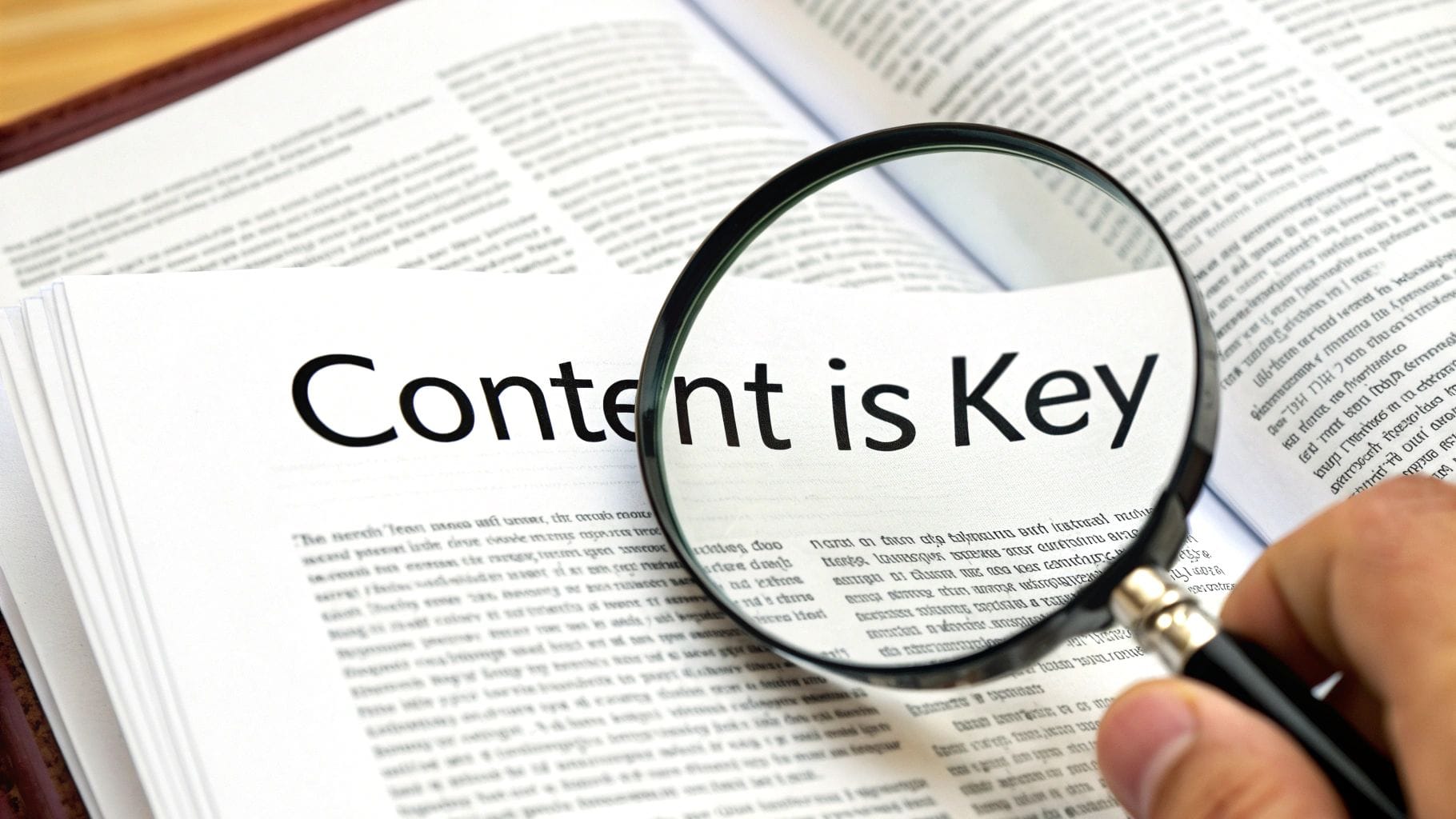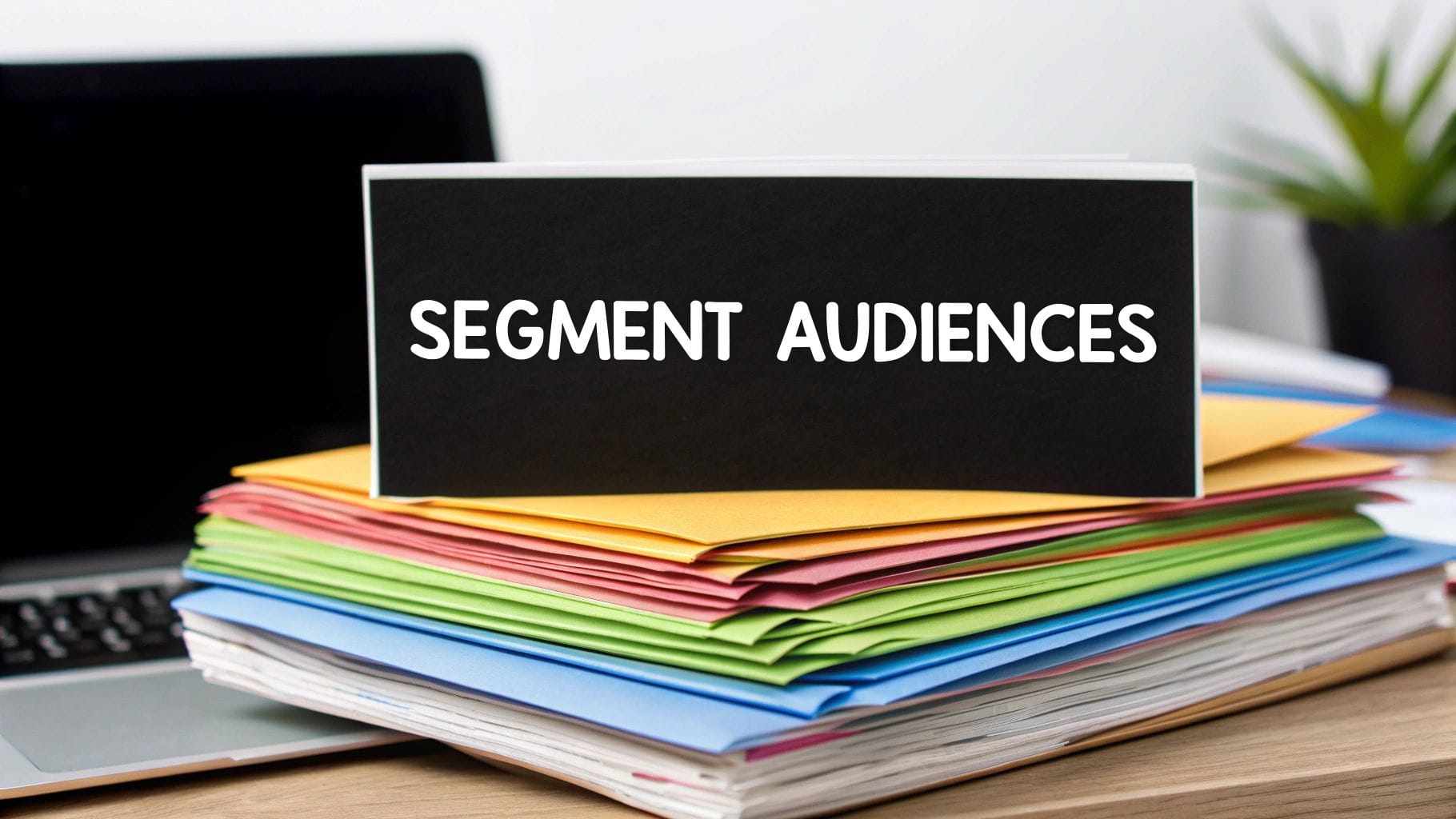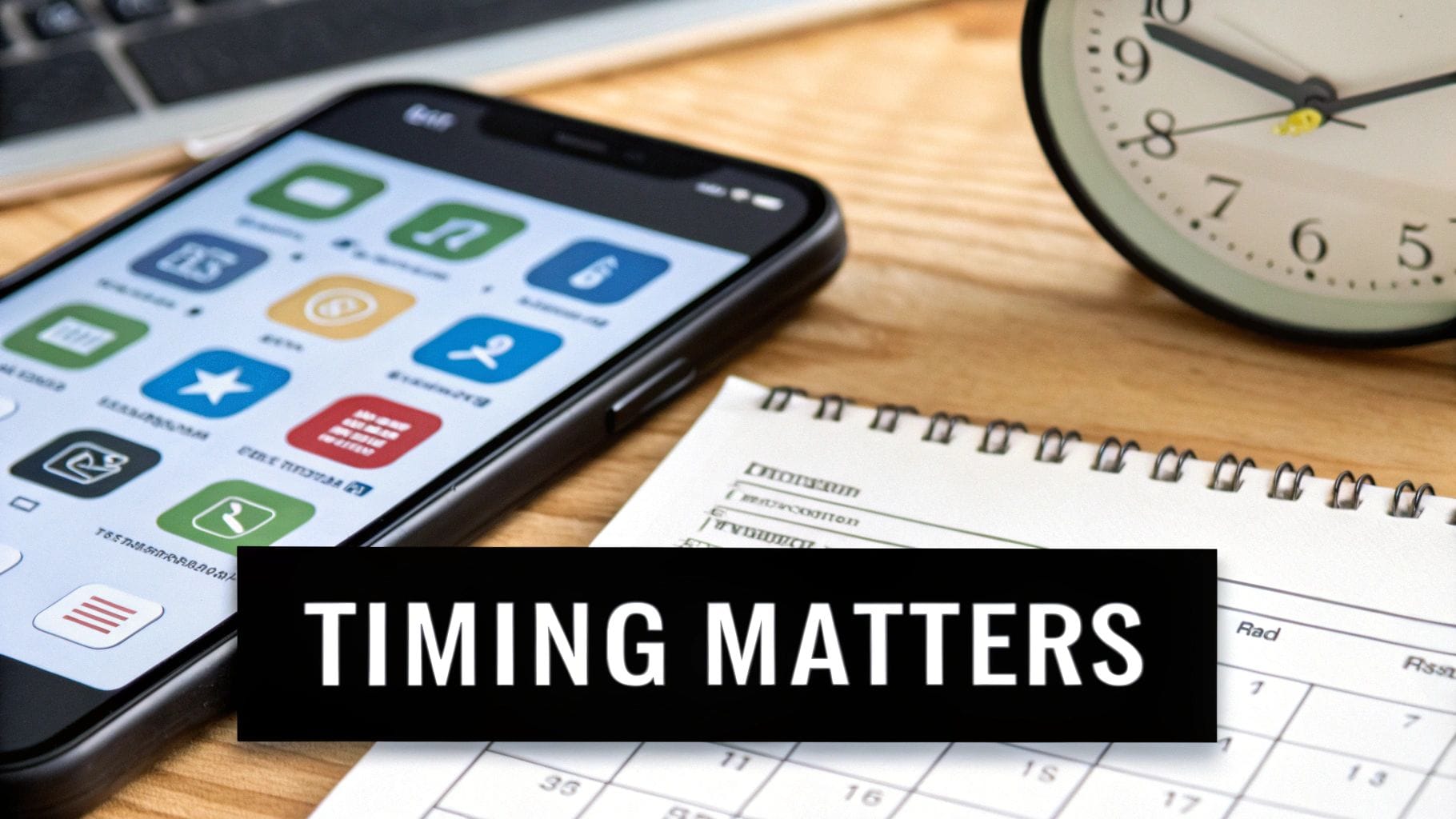Email Newsletter Best Practices: Essential Strategies for Transforming Your Campaigns
Email Newsletter Best Practices: Essential Strategies for Transforming Your Campaigns
Understanding Today's Email Landscape and Setting Realistic Goals
Email marketing success requires looking beyond basic metrics to truly understand what engages modern subscribers. While average open rates hover around 21.5%, some industries consistently achieve 25-28% or higher. This raises an important question - what strategies and approaches set these high-performing sectors apart?
Benchmarking Against Your Industry
Understanding industry-specific benchmarks is essential for setting appropriate goals. Education, agriculture, and financial services tend to see higher open rates, likely because their content directly impacts subscribers' work and daily lives. Manufacturing and distribution often have lower engagement due to different audience preferences and needs. This means success metrics vary significantly by sector - a 15% open rate could be impressive in one industry but lackluster in another.
Moving Beyond Vanity Metrics
Open rates alone don't tell the full story of email marketing success. The real measure is what subscribers do after opening - are they clicking through to your website, downloading resources, or taking desired actions? Focusing on these meaningful engagement metrics, rather than surface-level numbers, helps build more effective email campaigns.
Defining Your Own Success
Your business goals should shape how you measure email marketing success. Are you focused on generating sales, capturing leads, or building brand recognition? These objectives determine which metrics matter most, whether that's conversion rates, click-throughs, or social sharing. Learn more in our guide about How to master the customer journey in email marketing.
Embracing Continuous Improvement
Email marketing requires ongoing testing and refinement. Try different subject lines, content formats, and send times to see what works best for your audience. Review your results regularly, adjust your approach based on the data, and keep working to improve performance. This systematic process helps you steadily progress toward your email marketing goals.
Crafting Personalization Strategies That Actually Connect

Great email newsletters go beyond just using a subscriber's first name - they speak directly to what your readers care about. By diving deep into your audience's behaviors, preferences, and past interactions with your brand, you can create messages that truly resonate. For instance, rather than blasting the same promotional email to everyone, consider tailoring offers based on what products someone has bought before or which pages they've viewed on your site. This simple shift from generic to targeted content can dramatically improve how many people open and engage with your emails.
Segmentation: The Foundation of Effective Personalization

Think of segmentation like organizing your closet - you group similar items together to find exactly what you need when you need it. The same principle applies to your email list. By grouping subscribers who share key traits, you can craft messages that speak directly to their specific interests and needs.
Here are proven ways to segment your audience:
- Demographic Segmentation: Group people by basics like age, location, gender, or job role to match broad interests
- Behavioral Segmentation: Look at how people interact with your emails and website - do they open everything but rarely click? Do they buy certain products regularly? These patterns reveal what content will resonate
- Engagement Segmentation: Identify your most active subscribers for special treatment, while creating targeted campaigns to re-engage those who've gone quiet
- Purchase History Segmentation: For online stores, use past purchases to recommend related products and create personalized offers
Leveraging Data for Personalized Experiences
While subscriber data is essential for personalization, it's crucial to use it thoughtfully and transparently. Be clear about what information you collect and how you'll use it to improve their experience. You might be interested in: Top email marketing and email segmentation strategies for 2024. Give subscribers control over their preferences and communication settings.
Avoiding Personalization Pitfalls
Personalization is powerful but requires a delicate touch. Getting too personal can feel invasive rather than helpful. Focus on creating genuinely valuable content for each segment instead of just plugging names into templates. Keep testing and refining your approach based on how subscribers respond. Remember - the goal is building real connections through relevant, helpful content that shows you understand what matters to your readers.
Mastering the Art and Science of Email Timing
The success of your email newsletter depends on more than just great content and personalization - timing plays a crucial role. Even brilliantly crafted messages can miss their mark if they arrive at the wrong moment. Understanding when your specific audience is most receptive to your emails is just as important as what you say in them.
Why Conventional Wisdom About Send Times Can Be Misleading
While you'll often hear that mid-morning or early afternoon are the "best" times to send emails, following this general advice blindly can backfire. Think of it like rush hour traffic - when everyone sends at the supposedly optimal time, inboxes get crowded and your message risks being overlooked. Rather than following the crowd, you need a more nuanced approach based on your unique audience.
Industry Benchmarks: A Starting Point, Not the Finish Line
Different industries see varying patterns in email engagement. B2B audiences tend to be more responsive during work hours, while retail and entertainment subscribers often engage better in evenings or on weekends. While industry averages can guide your initial strategy, the real key is understanding your specific audience's habits and preferences. Learn more in our article about How to master the best time to send your email newsletter.
The Power of Testing and Optimization: Finding Your Sweet Spot
The truth is, there's no universal "perfect" send time. Success comes from continuous testing and refinement. Try sending at different times and days while closely monitoring your open and click rates. Think of it as running experiments - each test provides data that helps you understand your audience better and improve your results over time.
Beyond the Clock: Timing Based on Content and Behavior
Smart email timing considers multiple factors beyond just the hour of day. A flash sale announcement needs different timing than your regular weekly newsletter. Past engagement patterns can reveal when individual subscribers are most likely to read and click. For example, if someone consistently opens emails during their morning commute, that insight can help you time future sends more effectively.
Building a Timing Framework That Works for You
Create a systematic approach by combining three key elements: industry patterns, your audience's behavior data, and the type of content you're sending. This structured framework helps you move from guesswork to data-driven decisions. By analyzing what works for your specific audience and adjusting accordingly, you can significantly boost your newsletter's performance through better timing.
Creating Subject Lines That Drive Real Engagement
Your email subject line is the first impression subscribers get - and often determines whether they'll open your newsletter at all. Even the most valuable content won't matter if your subject line fails to grab attention. By mastering the art of writing compelling subject lines, you can dramatically improve your open rates and ensure your message reaches more readers.
Understanding the Psychology of Subject Lines
The best subject lines tap into basic human psychology - specifically curiosity and personal relevance. They provide just enough information to spark interest while holding back key details that make readers want to learn more. For instance, "5 Secrets to Boosting Your Productivity" performs better than a generic "Productivity Tips" because it promises specific, valuable insights. Adding personal touches like the subscriber's name or location can boost engagement further by making the email feel more individually relevant. Just be careful not to overuse personalization, as it can come across as forced or uncomfortable.
Frameworks for Crafting Compelling Subject Lines
You can rely on several proven approaches when writing subject lines. The "problem/solution" format highlights a specific challenge your readers face, then hints at how your content will help solve it. Another effective technique is asking thought-provoking questions - instead of "Financial Planning Tips," try "Are You Making These Common Retirement Mistakes?" Questions naturally draw readers in by making them curious about the answer. Get more inspiration from our guide to the best examples of newsletter subject lines.
A/B Testing: The Key to Continuous Improvement
While understanding subject line best practices is important, real optimization comes through testing. A/B testing lets you compare different versions to see what actually works best with your specific audience. Try testing variations in wording, length, and personalization to gather concrete data about what drives the highest open rates. This ongoing process of testing and refinement helps you consistently improve your results over time.
Avoiding Common Subject Line Pitfalls
As you craft subject lines, focus on being clear and honest rather than clickbait-y or misleading. While sensational subject lines might get initial opens, they damage credibility and lead to unsubscribes when readers feel tricked. Also be mindful of spam trigger words and excessive punctuation that could send your email to junk folders. The key is building trust through subject lines that accurately represent your valuable content while still being engaging enough to earn that crucial open.
Building Lead Nurture Sequences That Convert

Converting leads into loyal customers requires thoughtfully designed email sequences that guide prospects through their buying journey. When done well, these sequences build trust by delivering the right information at the right time. B2B companies have found particular success with this approach - studies show nurture campaigns can achieve effectiveness rates of up to 79% by consistently providing value and establishing credibility.
Mapping Content to the Buyer Journey
Like any journey, the path to purchase has distinct stages. Your nurture sequence should provide relevant content that matches where prospects are in their decision-making process:
Awareness: At this early stage, focus on educating prospects about their challenges. For instance, a software company might share an email about common project management bottlenecks and their impact on productivity.
Consideration: Now that prospects understand their problem, showcase how your solution helps. Share case studies, product demos, or comparison guides that highlight your unique benefits.
Decision: Help prospects feel confident in choosing you by addressing remaining concerns. Customer testimonials, limited-time offers, and clear next steps work well here.
This thoughtful alignment ensures prospects get exactly what they need to move forward with confidence.
Tracking Engagement and Informing Strategy
The work isn't done once you launch your sequence. Pay close attention to these key metrics to understand what's working and what needs adjustment:
Metric | Description |
|---|---|
Open Rates | Percentage of recipients who opened your email. |
Click-Through Rates | Percentage of recipients who clicked on a link within your email. |
Conversion Rates | Percentage of recipients who completed a desired action (e.g., purchase, signup). |
Unsubscribe Rates | Percentage of recipients who opted out of your email list. |
These numbers tell an important story. Low click rates might mean your calls-to-action need work. High unsubscribes could indicate you're targeting the wrong audience segments. By regularly reviewing this data, you can fine-tune your approach based on actual subscriber behavior rather than assumptions. Small improvements in targeting, timing and messaging add up to significantly better results over time.
Remember that successful nurture sequences balance providing value with moving prospects toward a sale. Focus on building genuine relationships through helpful content while gently guiding leads through your funnel.
Implementing Technical Best Practices That Matter
A successful email newsletter requires more than compelling content - it needs solid technical foundations to reach and engage subscribers effectively. Proper deliverability, mobile-friendly design, and accessibility aren't flashy features, but they make the difference between newsletters that connect with readers and those that go unnoticed.
Ensuring Your Emails Reach the Inbox
No matter how well-crafted your newsletter is, it won't have any impact if it lands in spam folders. Email authentication protocols like SPF, DKIM, and DMARC act as digital verification systems to confirm your sender identity and prevent email spoofing. Setting these up properly improves your sender reputation with email providers. Regular list maintenance is also key - removing inactive subscribers and bounced addresses helps maintain high deliverability rates.
Optimizing for the Mobile Experience
Since over half of subscribers open emails on mobile devices, your newsletter must work seamlessly across all screen sizes. This means using responsive design elements that adapt automatically - images should scale properly, text should be readable without zooming, and layouts should avoid horizontal scrolling. A clean single-column design often works best for mobile. Poor mobile experiences frustrate readers and lead to unsubscribes.
Designing Templates for Accessibility and Engagement
Your template should help readers engage with your content, not get in their way. Focus on clear formatting, concise writing, and strategic use of white space to improve readability for all subscribers, including those using screen readers. Use adequately sized fonts and high-contrast color combinations. Add descriptive alt text to images so visually impaired subscribers can understand the content. For more on measuring template effectiveness, see our guide on email newsletter metrics to track. These small but important design choices directly impact how well your newsletter performs.
Striking a Balance Between Simplicity and Sophistication
While fancy interactive elements might seem appealing, simpler designs often perform better in email marketing. Complex templates can slow loading times and trigger spam filters. Think of website design principles - clean, organized layouts generally outperform busy, overwhelming ones. For newsletters especially, subscribers want quick access to information. But simple doesn't mean boring - thoughtful use of color, typography and high-quality images can create visual interest while maintaining clarity and performance. This balanced approach ensures your newsletter looks great and works well.
Ready to build an effective email newsletter program? Inagiffy provides comprehensive newsletter services covering everything from technical optimization to content creation. We handle the complex backend work so you can focus on connecting with your audience and growing your business. Visit our website to learn more about building an engaged email community.